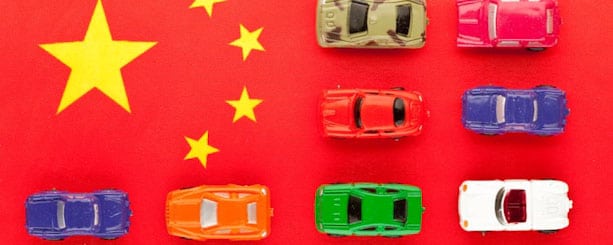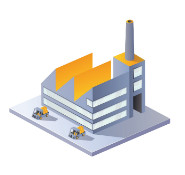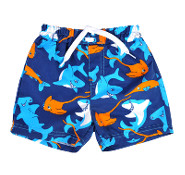Suggestion: Watch the 10 minutes video tutorial before reading this article
Largely concentrated in Guangdong province, and Shantou city in particular, China’s toy industry is the worlds largest. Startups and Multinationals alike, are importing toys directly from Chinese manufacturers. In this Product Guide, we explain what importers must know about Toy Safety Regulations, Labelling Requirements and Testing Requirements. In addition, we also explain why compliance with overseas standards and directives cannot be taken for granted, when sourcing manufacturers in China, and other Asian countries.
Toy Safety Regulations
For obvious reasons, specific safety standards and substance restrictions apply to toys, and other children’s products, in most developed markets. The scope of products fitting inside the definition of a toy, or a children’s product, is wide. That said, most applicable directives and standards can be grouped in at least one of the following categories:
- Physical / Mechanical Properties (e.g. Seams, buttons)
- Substance Restrictions (e.g. phthalates, lead and cadmium)
- Electrical Safety Regulations (e.g. Electromagnetic Compatibility, Overcharge protection)
Toy Safety Regulations are often regulated by frameworks or directives, such as CPSIA in the United States and the Toy Safety Directive (EN 71) in the European Union. However, these regulations often refer to ASTM and ISO standards, of which the importer is required to ensure compliance. As such, an assessment, both on applicable standards, and a supplier capability to comply, must be made before mass production begins. Don’t rely on the supplier to make such an assessment, as it’s always the importer that is ultimately responsible for ensuring compliance.

FREE CONSULTATION SESSION
- 1. How to create product designs & specifications
- 2. Finding suppliers in China, Vietnam & India
- 3. Shipping & import taxes (US, EU, UK & Australia)
- All attendees can ask questions!
- Best Regards, Ivan Malloci
Labelling Requirements
In addition, and often as a complement, to product and substance regulations, importers must ensure compliance with all applicable labelling requirements. Labelling requirements may either be part of of specific Toys and Children’s Product Standards, or part of other regulations, applicable to several product categories. Below follows a brief overview of what may be required, but beware that labelling requirements differ between markets.
- Country of Origin (e.g. ‘Made in China’)
- Warning Labels (e.g. Age recommendation, loose parts)
- Other marks (e.g. CE, WEEE and FCC)
As previously mentioned, importers shall never make the assumption that the supplier is already aware of a product must be labelled, according to regulations in a certain market. Instead, the buyer must provide all necessary documentation directly to the supplier, including ready made graphical files. The stakes are high, as improper labelling is illegal, and may result in a forced recall, major fines – or both.

Compliance testing and certification is often mandatory
A Certificate or a substance test report is only valid for that one specific SKU, or material sample, submitted to the testing company. Changing a material, for example a button or fabric, may render a product non-compliant. Therefore, the importer must go through the compliance procedure each time a new product is developed – or when a change is made.
In addition, importers may also be required to implement a compliance program, with testing on some, or all batches, even if no design or material changes has been made. Even if that is not explicitly required for your products, in your markets, it’s still highly recommended. Due to the lack of transparency, even between the manufacturer and its subcontractors, it’s impossible to eliminate the risk of a components and material suppliers changing specifications – without making either you, or the manufacturer, aware.
As testing costs are multiplied on the number of different SKUs, materials and components, in addition to batch specific testing, compliance costs increase with variety. For companies struggling with keeping costs down, this can only be achieved by reducing the degree of variety. In practice, this force importers to limit the number of different SKUs, materials, colors and components. Today, this is exactly what, successful, small to medium sized companies do.
Never take product compliance for granted when sourcing Toy and Children’s Product Manufacturers in China
Considering that compliance with overseas toy safety regulations is mandatory for accessing the world’s largest markets, it would be rather logic to assume that said compliance can be taken for granted. Yet, I know from experience that such assumptions can quickly result in immense losses, sometimes bankruptcy, as I’ll get back to in a bit.
Ensuring compliance with, for example EN 71 Part 1, 2 and 3, requires the supplier to posses both the necessary technical expertise, and the ability to control its incoming materials, purchased from subcontractors. In China, the latter can be incredibly challenging, as the domestic materials supply chain is all but transparent. In short, far from all suppliers can ensure compliance with European, American and Australian toy safety regulations.
Yet, far too many importers fail to realize this. Back in 2011, I received a call from a wholesaler, based in my native Sweden. This was around the same time that the European Toy Safety Directive (EN 71) was amended, for which reason the importer required updated documentation from his supplier. Quickly, it turned out that the supplier was not only unaware of the new changes, but a closer look also revealed that the previous documentation was not authentic. What made things slightly worse was that the local authorities, for reasons I was not made aware of, had questioned the product certificates held by the importer – and gave them a deadline to amend this. Until that requirement could be fulfilled, the company was not allowed to distribute their goods.
As it turned out that the toys where non-compliant, the authorities ordered a recall, essentially forcing them to buy back the delivered goods from their retailers. That is at least the last thing I know, as their purchasing manager never called me back since. Unfortunately, they didn’t do the groundwork, forcing them to learn this lesson the hard way. As said, previously in this article, it’s always up to the importer to ensure compliance – not the supplier.
Toy safety issues have made the headlines on a frequent basis in the last few years. In 2011, a report from IPEN and Greenpeace claimed that one third of the toys sold in China, contained excessive amounts of lead and other heavy metals. Worth noting, however, is that this study focused on toys made for the domestic market, but toy importers still have all reason to remain wary.
Duty Rate Comparison
| Product | US | EU | AU |
|---|---|---|---|
| Plush Animals | 0% | 4.7% | 5% |
| Model Kits | 0% | 0% | 0% |
| Puzzles | 0% | 4.7% | 5% |
| Dolls (non-stuffed) | 0% | 4.7% | 5% |
| Board Games | 0% | 0% | 5% |
Toys & Children’s Products Trade Fairs in Mainland China and Hong Kong
Canton Fair Phase 2
- Location: Guangzhou
- When: April and October
- Products: Electronic toys, Plastic toys, Dolls, Plush toys, Sports products, other toys and children’s products
Hong Kong Toys & Games Fair
- Location: Hong Kong
- When: January
- Products: Educational Toys & Games, Hobby Goods, Paper Products & Toy Packaging, Video Games, Electronic & Remote Control Toys Outdoor & Sporting Items Vehicles, Mechanical Toys & Action Figures
China Toy Expo
- Location: Shanghai
- When: October
- Products: Mechanical toys, electronic toys, toy figures, Plush toys, dolls, wooden toys, Educational toys Hobby/Model construction, Creative design and games, Baby toys & products, Outdoor toys & sports articles, Festive articles and decorations, Licensed products






















Hi,
I want to know that if i want to import toys & entertainment product from, what will be the complete procedure for the same & as well as what should be the min qty of any particular item. I mean if i want to import different toys in bulk qty but every article qty will not be more than 10 pieces than is it possible that seller can sell me.
Thank
A.K
Hi, I am looking at importing wooden puzzles for kids aged 3 and over to the USA for Amazon. Is a puzzle considered as a toy, and do all the compliance requirements apply to puzzles as well? I have contacted my supplier and they are able to supply me with certificates to say the paint and wood they use is safe. Is this suffice to the import requirements to the USA? If not, what else do I need?
Hi Alycia,
Yes, a puzzle is a toy. In fact, CPSIA applies not only to toys – but all children’s products.
No,that is not sufficient. CPSIA outlines very clear procedures and document requirements.. and labeling requirements too. You need to get a consultant for this.
Hi,
What if I am doing a trial order of 200 units.. How does the testing cost justify this?
Hi Priya,
Product regulations apply regardless of the volume. Importing a small volume don’t reduce the need to ensure that the products are safe.
Hi,
I am trying to import a 40″ plush toy container form China to Canada (Vancouver). There are more than 100 samples in a container. Should I have the test results for all of the 100 samples? How much does it cost for a full test which shows that a sample is compliance?
Regards,
A. Rad
Hi Ahmad,
No, you don’t need to test every single unit. You should, however, test at least one unit per SKU. In addition, there are various mandatory documents that you must provide.
Hi, I intend to import a consignment of around 50000+ Rubik’s cubes from china. Can anyone please assist me on suppliers, the quality certifications and the legal engagements required for such a transaction. The cubes would be distributed t under-privileged children by a non profit organisation in India that I represent.
Hi,
i am a first timer and interested in importing large quantity of toys into Nigeria for resale. Can i source all the information required, from the beginning marks to the final, from you? I won’t mind e-mail communications with you.
We commend you for the first class assistance you have been rendering.
Hi Leo,
Yes, in the sense that many of the guides apply universally, to importers in all countries. However, Nigeria has its own set of product certification regulations (SONCAAP) that you need to look into. Unfortunately that is beyond our expertise. The same also goes for local customs procedures.
Hello Fredrik ,
Thank you very much for all the valuable information you post in this site. These days, everyone is talking about sourcing from china and selling into Amazon. But unfortunately very few people are ready to talk about this “no so cool” subject. Even though for many it may be the difference between success and complete failure.
I am a first-time importer to the USA. I am importing a product that is a bit difficult to categorize, travel bassinet + baby changing + diaper bag.
During the last days I have been swimming (mostly drowning) in information about safety compliance in the USA especially CPSC. The more I read, the more I realized that I will not be able to find out what exact acts/test do I need to request to be compliant.
So far I found all these difficulties trying to answer the question “what do I need to be compliant with?”
1 – Non very clear category for my product,
2 – Many Many different acts
3 – Updates and modifications of the acts.
4 – And then, the “small batch manufacture” category, it is really a relief, how I can leverage it?
I miss a company that provide just that service .. I show them my product , then they give me a list of things I need to be compliant with and laboratories where I can get that done. Easy isn’t it? But .. no where to be found :(
Anyway, thanks you very much Fredrik for taking the time to write these valuable articles.
Hi Omar,
Thank you for a well written comment. Yes, assessing which regulations apply to a product is a huge challenge. We are working on something called the “Compliance Guide”. The first Compliance Guide: Apparel & Textiles, will be launched later in March here on Chinaimportal.com. However, we don’t have a set date for a Compliance Guide for Children’s Products and Toys. It’s a challenging area, and one where the margin for failure is very thin.
hi i want to import wooden toys from china to India.Is their any certificate required to import wooden toys from china?
I do appreciate the amount of hard work given on toys.. as at the end all parent will think of their kid safety and product quality..
Regards
Sayani Banerjee
Dear Mr Grönkvist,
We would like to buy toys in large quantity in tune of 12-15 miliion pieces in price range of CYN 0.048 to CYN 0.1467 for consumer promotion as free bies to be given to consumer with our one of the product. We would like to meet manufacturers toys in China. We shall be thankful to you if you could advise on cities we should visit to buy toys as described above. We are planning to visit China by early next week.
Thank you,
Nilesh Dave
Hello Nilesh,
We will contact you by email
Dear Nilesh Dave,
My name is Annie from China.Very glad to help you with this question because I am familar with China and the toy market.I am not a toy supplier,but a girl in charge of all kinds of test and inspection for goods impported or exported.
In China,there are many toy factories in GuangDong province,which is very near to HongKong.Such as ShenZhen,DongGuan,Foshan and so on.The price is competitive.
To control the quality,the toys should pass the test of ASTM 963 ,you can ask your supplier to do this test ,or you can do it by yourself,just need to find a testing and inspection lab.
If one day you come to China,you can call me .I worked in the china’s leading test lab—CTI,hope one day can help you with your business.
My phone is +86 15889572389,I am living in ShenZhen.
Looking forward to hear your news.
Dear Mr Grönkvist,
I am a parent, concerned about the safety of the materials in Rubik’s Cubes imported from China into the US. My son is involved in “speed cubing” and owns lots of cubes imported from China and handles them constantly. The very best cubes are from China. What step would suggest I take to research the quality of the products that he is using.
Thank you.
Dear friend,
This is Annie from CTI,the leading test and inspection firm in China.I am in charge of all kinds of test and inspection for toys imported from China.
About your question,I can help you to provide some suggestion.
In US,the toys should pass the test of ASTM 693 ,when you buy them from a shop,you can ask the shoper owner whether the toy has been tested.
Gud day, what will it take me(monetry) and hw long to import a container load of children’s book and toy that is worth it.
4rm Nigeria
Hello,
The production is usually around 30 days. Shipping takes another 38 – 42 days to Western Africa. However, what takes the most time is sourcing, price research and product development. This can take anything from one to six month, depending on the complexity of the product.
Chinese suppliers also have Minimum Order Quantity Requirements, please read this article for more information: https://www.chinaimportal.com/blog/minimum-order-quantity-moq-why-it-s-required-by-chinese-suppliers/